#nepidae
Text


Seen at the Audubon aquarium in New Orleans, the stick body style of water scorpions! They had a whole tank! The connected insectarium also had an exhibit with some of the larger, wider body style, but I forgot to get a picture of those. Sorry for the picture quality, I got really excited and couldn’t stay still.

So many… ❤️❤️❤️
#nepidae#water scorpion#Hemiptera#true bugs#aquatic insects#insects#entomology#bugs#nature#science#my photos
65 notes
·
View notes
Photo

Common Water Stick Insect (Ranatra linearis)
Family: Water Scorpion Family (Nepidae)
IUCN Conservation Status: Unassessed
Although its name and elongated, stick-like body may suggest otherwise, the Common Water Stick Insect is not closely related to true stick insects, instead being a highly specialized species of water scorpion (a family of aquatic, carnivorous insects characterised by their hooked front legs which, like the legs of a mantis, are modified to be used for grasping prey.) Although its stick-like body has developed independently of the true stick insects found on land, it is used for a similar purpose - like most stick insects, Common Water Stick Insects spend much of their lives perched motionless on branches or other forms of submerged vegetation, making them difficult to distinguish from the plants around them. Remaining in this position conceals them both from potential predators and from their prey, and when a suitably sized animal (usually a large aquatic insect, tadpole or small fish) gets close enough they use their powerful hook forelimbs to quickly grasp and restrain it before inserting their sharp-tipped, tube-like mouths and draining the prey of nutritious internal fluids such as blood or haemolymph (the equivalent of blood in arthropods.) Found in well vegetated ponds, lakes and (on rare occasions) lagoons across much of Europe and North America, Common Water Stick Insects move between perches by swimming, but are unable to extract oxygen from water and must instead keep the long, tail-like protrusion at the tip of their abdomen, which essentially serves as a rear-mounted organic snorkel, above the surface when perching in order to breathe. Members of this species breed in the mid spring (with females depositing a large number of tiny eggs in neat rows on aquatic vegetation shortly afterwards,) and their larvae, which are carnivorous from birth, reach full maturity when around 2 months old. Though they rarely leave the water if left to their own devices, a lack of prey may lead to large numbers of Common Water Stick Insects surfacing and taking flight in search of new hunting grounds.
--------------------------------------------------------------------------
Image Source: https://www.inaturalist.org/taxa/362340-Ranatra-linearis
#Common Water Stick Insect#Water stick insect#insect#insects#zoology#biology#entomology#arthropods#arthropod#north american wildlife#european wildlife#aquatic wildlife#pond wildlife#bug#bugs
52 notes
·
View notes
Text
hang on I talked about these guys once ages ago but I was reminded of them this morning and feel a need to share them. Now that there's suddenly more eyes here. Need everyone to know one of my favorite insects

(Photo credit)
look at this thing. Appreciate how it looks like a cross between a stick bug (with a slender, elongate body) and a mantis (those sick raptorial claws). Look at and appreciate how silly they look, all weirdly positioned and wonky.

(Photo credit)
On first glance you'd probably think this thing is a mantis that just lies flat. Or perhaps a stick bug that evolved in a weird way. But no actually. It's neither of those things.
It's in the order Hemiptera, which is the order inhabited by stink bugs, assassin bugs, leafhoppers, and cicadas. Because it's got a rostrum. Which is essentially a fucked up and evil beak.

(Photo credit, which is actually just electronically published images from the book "Guide to Aquatic Invertebrates of the Upper Midwest")
And they are positioned like that because they're an aquatic species. They're little swimmy bitches.
So that's fucked up, right. Because it looks so much like a stick or mantis, only to juke you with being a True Bug. Well what's even MORE fucked up?
what do you think we Called these things. What did we as a human species decide to name them.
that's right
WATER SCORPIONS
that's not even the same CLASS !! Those are ARACHNIDS!! These are INSECTS!!!
At least for the other half of the family (Nepidae) it makes SOME amount of SENSE,

(Photo credit)
LIKE I GET THAT, even if it's still an Insect at least I get it SUPERFICIALLY...
but when you off-handedly refer to these thangs as a water scorpion, people are probably thinking one of those guys with the long barbed-tails and big snippy snippy claws and are all horrified when you're like "oh I just pick up that little twig in my hands hehe" NO!!!! They'rE NOT scorpion .
It's a silly little stick cosplaying as a mantis when in reality it's a stink bug. and it's name is Wet Scorpion.
Appreciate. Appreciate it with me
#not that handling scorpions is all that scary either (she is biased she handled a very large scorpion for many hours at multiple#educational events) but STILL. The image it conjures is Totally Wrong.#and i love it. it means everything to me#clamtalk#bugs#insects#entomology#bugposting
15 notes
·
View notes
Photo
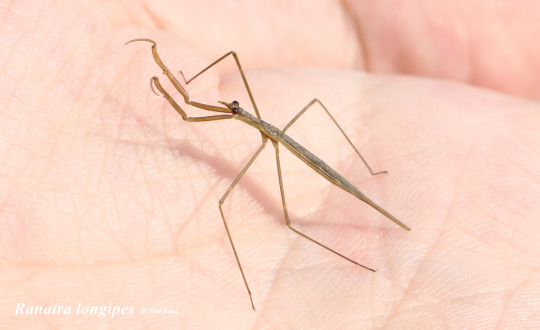
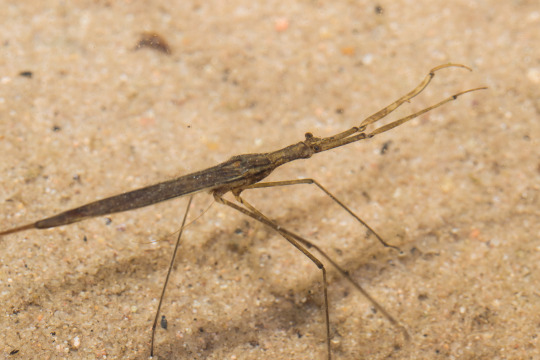

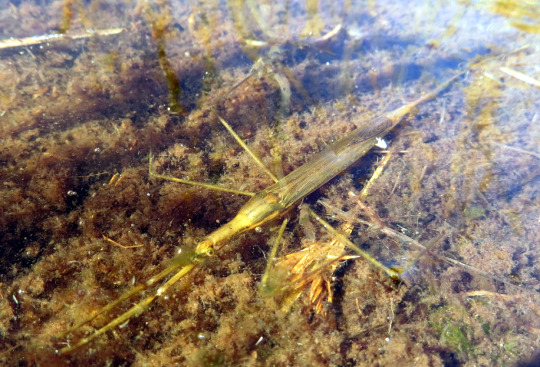

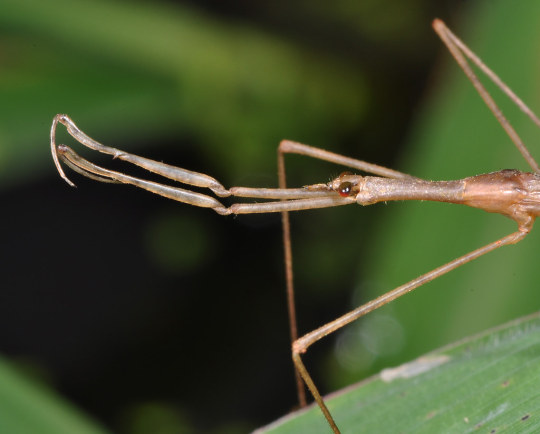
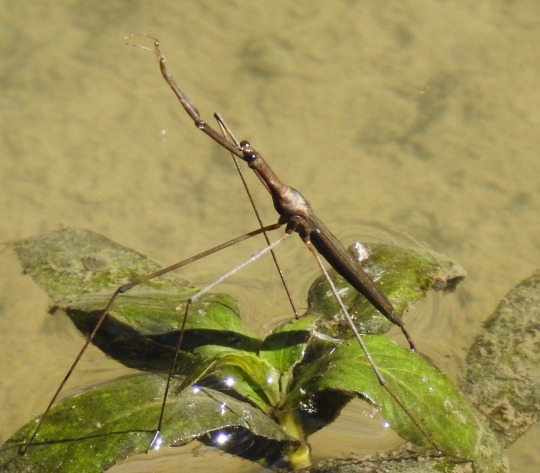

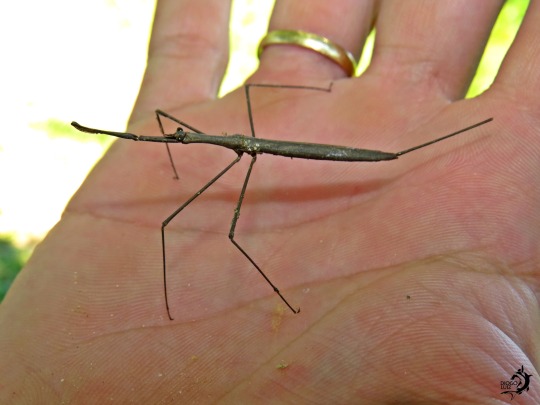
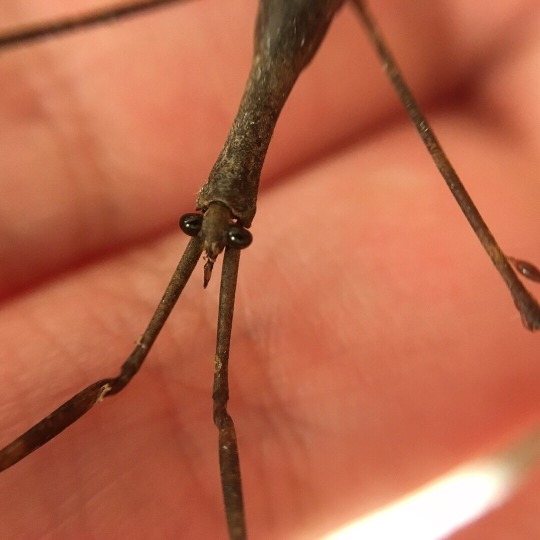
Waterscorpions in the genus Ranatra, Nepidae, Hemiptera
Waterscorpions (sometimes called water stick insects) are predatory, freshwater true bugs found throughout the world. Their raptorial front limbs are used for grasping prey, which includes other insects, tadpoles, and even small fish. They breathe air through a tail-like siphon on their rear end. Despite their almost exclusively aquatic lifestyle, they can and will fly, but do so rarely.
Photo 1 by zhongyankui, 2-3 by wenzel_sylvester, 4 by gijwans, 5-6 by Art Anker (shared with permission; do not remove credit or re-post!), 7 by vanremsen, 8 by josh_vandermeulen, 9 by diogoluiz, and 10 by hazelsnail
#animals#curators on tumblr#insects#bugs#waterscorpion#water stick insect#Nepidae#true bugs#aquatic#Ranatra#one nice bug#you have no idea how hard it was not to call their siphon a butt snorkel
943 notes
·
View notes
Photo
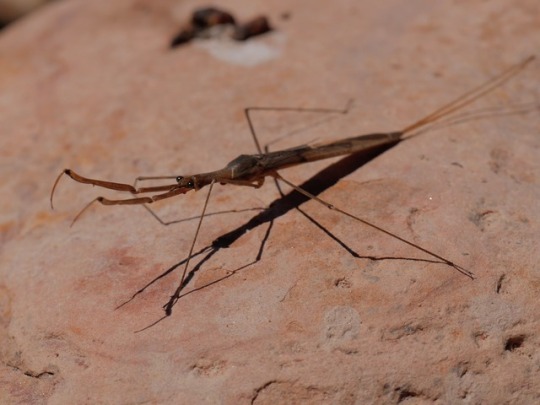
Ranatra fusca “Brown Waterscorpion” Nepidae
Lake Inez, Lolo National Forest, MT
May 23, 2017
Robert Niese
There’s something genuinely unnerving about insects viciously preying upon vertebrates, and waterscorpions are superbly specialized for this terrifying task. They sit near the surface of the water, head down, with their elongated, raptorial front limbs outstretched, waiting. Their long paired “tails” remain in contact with the water’s surface like a snorkel, allowing them to breathe while fully submerged. When some unlucky fish or tadpole swims too close, they snap them up like a mantis and immediately stab them with their sucking mouthparts. Their saliva both subdues and begins to digest their prey, allowing them to suck out the animal’s insides. On a completely unrelated note, this individual looks worse for wear, which led me to discover that adults actually overwinter in lakes and ponds here in Montana -- not an easy task considering that most bodies of water freeze-over completely at some point. So apparently they’re indestructible AND hyper-specialized predators. Thank goodness they’re only five inches long.
#Ranatra fusca#Ranatra#Nepidae#Waterscorpion#Brown Waterscorpion#Hemiptera#true bugs#Lake Inez#Lolo National Forest#Montana#Pacific Northwest#macro photography#original photography#photographers on tumblr#natural history#Robert Niese
90 notes
·
View notes
Photo

Weird #creepy looking bug Haha. I love it - sat and watched it hunt. . . #waterscorpion #Nepidae #hemiptera #природа #instafollo #instafollow #insta #picoftheday #youtuber #instagood #explorepage #exotic #petsofinstagram #bugs #predatororpreyonline #wow (at Saint Clears, Carmarthenshire, United Kingdom) https://www.instagram.com/predatororpreyonline/p/BvpOC2eneXo/?utm_source=ig_tumblr_share&igshid=1uldkpr9kw6j8
#creepy#waterscorpion#nepidae#hemiptera#природа#instafollo#instafollow#insta#picoftheday#youtuber#instagood#explorepage#exotic#petsofinstagram#bugs#predatororpreyonline#wow
0 notes
Photo

14 notes
·
View notes
Note
If Cerebros and Craniak had alt-modes besides heads, what would they be? I could see Craniak turning into either a nepidae or a jet, and I could see Cerebros turning into either an SUV or a space shuttle.
Dear Cerebral Contemplator,
In one universe, Craniak was the leader of the team of Decepticons who pursued the Autobots to Nebulos. In this reality, it was the Decepticons who pioneered the Headmaster process; Craniak forcibly recruited Lord Zarak to bond with him, intending to use his unwitting partner's knowledge of Nebulos to turn the organic world into his own personal science facility. He might have succeeded, had Autobot lieutenant and would-be pacifist Cerebros not undergone the binary-bonding process himself, merging with Nebulan anti-government agitator Spike.
...Ah, but I'm getting away from your actual question. This version of Cerebros transformed into an armored personnel carrier, similar to the Cerebros seen in IDW Publishing's The Transformers: More than Meets the Eye. Craniak, meanwhile, transformed into a huge mechanical cephalopod. Now that I think about it, he bore more than a passing resemblance to the Tako Tank piloted by Ikard during the Beast Wars on planet Gaia.
#ask vector prime#transformers#maccadam#generation 1#marvel transformers#cerebros#craniak#headmasters#nebulos#zarak#spike witwicky#japanese generation 1#beast wars#tako tank#ikard#gaia
11 notes
·
View notes
Note

Could you draw my OC nepidae? She is a sandwing seawing hybrid, its okay if you don't want to :)

Third attempt at answering this ask lol.
Seawings in my HCS have shrimp or catfish whiskers. Moreso for electrical senses. This means they’re also good at picking up storms.
This design was really cute and I love your choice of colors! I just couldn’t imagine them in my style with a sharp snout unfortunately, so they became round
6 notes
·
View notes
Photo
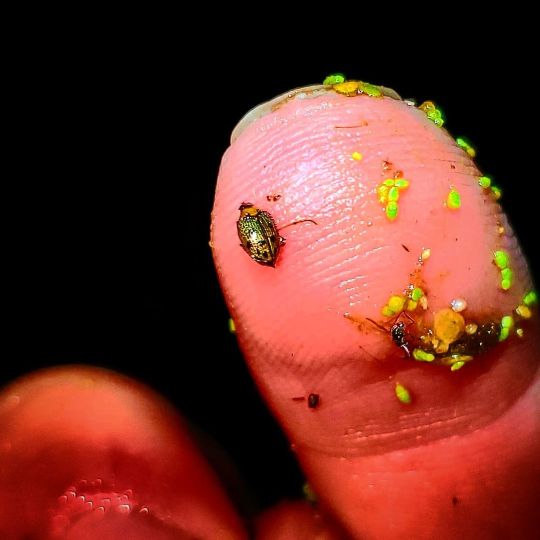
This is the 77th installment of 'Since I've Been Gone'. Taken on the same night of the last post while on my Iowa hitch with @americanconservationexperience, I caught this tiny crawling water beetle that I believe is 'Peltodytes edentulus', but if someone wants to correct me, be my guest. Like others of their family, they are clumsy swimmers compared to driving beetles, not to mention not as well studied, which is surprising given how great they are to look at. #animal #animals #wildlife #iowawildlife #nature #iowanature #invertebrate #invertebrates #fauna #imago #iowainsects #insect #insects #insectagram #aquaticinsect #aquaticinsects #beetle #beetles #waterbeetle #crawlingwaterbeetle #crawlingwaterbeetles #animalia #arthropod #arthropods #arthropoda #insecta #hemiptera #nepidae #ranatra #ranatrafusca (at YMCA Camp Wapsie) https://www.instagram.com/p/CWMVBXxKCFP/?utm_medium=tumblr
#animal#animals#wildlife#iowawildlife#nature#iowanature#invertebrate#invertebrates#fauna#imago#iowainsects#insect#insects#insectagram#aquaticinsect#aquaticinsects#beetle#beetles#waterbeetle#crawlingwaterbeetle#crawlingwaterbeetles#animalia#arthropod#arthropods#arthropoda#insecta#hemiptera#nepidae#ranatra#ranatrafusca
2 notes
·
View notes
Photo

#daily draw #5centtarot #7ofCups - CupsThe water scorpion bug, or Nepidae, has scythe-like front legs for seizing prey, here being the seven cups of wishes, dreams — and sometimes curses! All appear within reach, but choices need to be made, and all is not as it seems. The message is to see beyond illusion and allure, and instead focus on reality and what is truly right for you. #tarot #indietaot #tarotreadersofig https://www.instagram.com/p/B78VUKvnSPQ/?igshid=95up4y7iw12k
1 note
·
View note
Note
🌻 pls one more...
the tire in my backyard has been there for a year now since i rolled it back there after i found it on the highway, in the center theres the tiniest pool of water and scum, sometimes i go back there just to watch it. you can move the layer on the water around and see little bugs like dragonfly larva and baby nepidaes swirling against your touch, underneath that theres moss with worms writhing on it and clay farther down, spiders live in the cavern part of the tire and theyre constantly spinning nests around dead things they caught and hiding their eggs against it, i watched one hatch one day and thousands of little red dots poured out and swarmed the dead mother . but now its winter and the waters gone. theres no bugs and the spiders left. it smells stagnant and like decay and i miss it
17 notes
·
View notes
Text
FACTORS INFLUENCING THE PREDATORY EFFICIENCY OF Nepa cinerea LINNAEUS 1758 (HEMIPTERA: NEPIDAE) ON PREY Aedes albopictus SKUSE 1894 (DIPTERA: CULICIDAE) | UTTAR PRADESH JOURNAL OF ZOOLOGY
On the basis of various factors such as prey instar and density, space size, and vegetation density, the predatory performance of Nepa cinerea on Aedes albopictus larvae as prey was investigated. At prey density numbers of 2, 4, 8, 16, and 32, the total amount of prey intake was 3.91.5, 10.61.5, 21.01.9, 42.64.2, and 79.66.5, respectively. The total number of prey consumed by the predator at different volumes, namely 1, 2, 5, 10, and 20L, was 41.81.4, 35.60.7, 28.81.4, 22.1 0.7, and 14.01.0, respectively, for space size. The total amount of prey intake was 39.51.7, 32.61.6, 29.51.1, 24.60.5, and 20.60.8 for vegetation density of 1, 2, 3, 4, and 5g, respectively. The current study provides an important insight into the factors that influence the variation of predators' predation efficiency on their prey, which are important criteria in determining a concrete prey-predator relationship.
Please see the link :- https://mbimph.com/index.php/UPJOZ/article/view/2046
#Nepa cinerea#Aedes albopictus#predatory efficiency#prey instar#prey density#space size#vegetation density
0 notes
Note
Someone I was talking to brought up how insects can have gills, but they're generally lost when shifting to their adult stage. Brought up the question as to why adult insects, while some are aquatic, do not have gills. Do you happen to know why that is or know of any theories about it?
I would think it has to do with the way they evolved. The way I understand it, the theory is that flying insects evolved first on land, and then later some species became aquatic. Obviously why they became aquatic depends on each group or species, but I imagine it's a combination of factors including predator avoidance and food availability/abundance. If all your competitors are eating the food you want on land, just go get some in the water instead. Or if your main predator is terrestrial, hop in the water to avoid them.
Since adult insects in general can fly and often need to fly in order to find a mate, they mostly have no reason to stay in the water their entire life and thus they never had a needed to evolve gills in their adult form. Those that do stay in the water most of the time as adults have evolved other ways to breathe in water but still be able to leave the water when necessary. Water scorpions (true bugs in the family Nepidae), for example, have a siphon (sort of a snorkel) sticking off their butt that they use to breathe when in the water, and the usual spiracles to breathe air when out of the water. Adult diving beetles hold a pocket of air under their elytra to breathe in water, and again, use the usual spiracles to breathe when out of water.
Nymphs and larvae, because they can't fly in their juvenile form, tend to need to stay submerged all the time, and needed to evolve an efficient way to breathe there, so they evolved gills.
Isopods, conversely, evolved first in the ocean with gills and later came onto land, and never lost their gills! That's why they tend to live in damp places where they can keep their gills wet to breathe properly. Of course isopods are crustaceans and not insects, but still an interesting comparison.
Now take this all with a grain of salt, as I've never looked deeply into the topic myself, so it's mostly conjecture and generalizations based on what I know, and obviously depends largely on exactly the type of bug and where and how they live!
77 notes
·
View notes
Photo

The water scorpion (nepidae) is an insect from the order hemiptera. Its tail is actually a breathing aparatus that enables it to access oxygen even while it is submerged and while it can't sting, some species can deliver a painful bite.
0 notes
